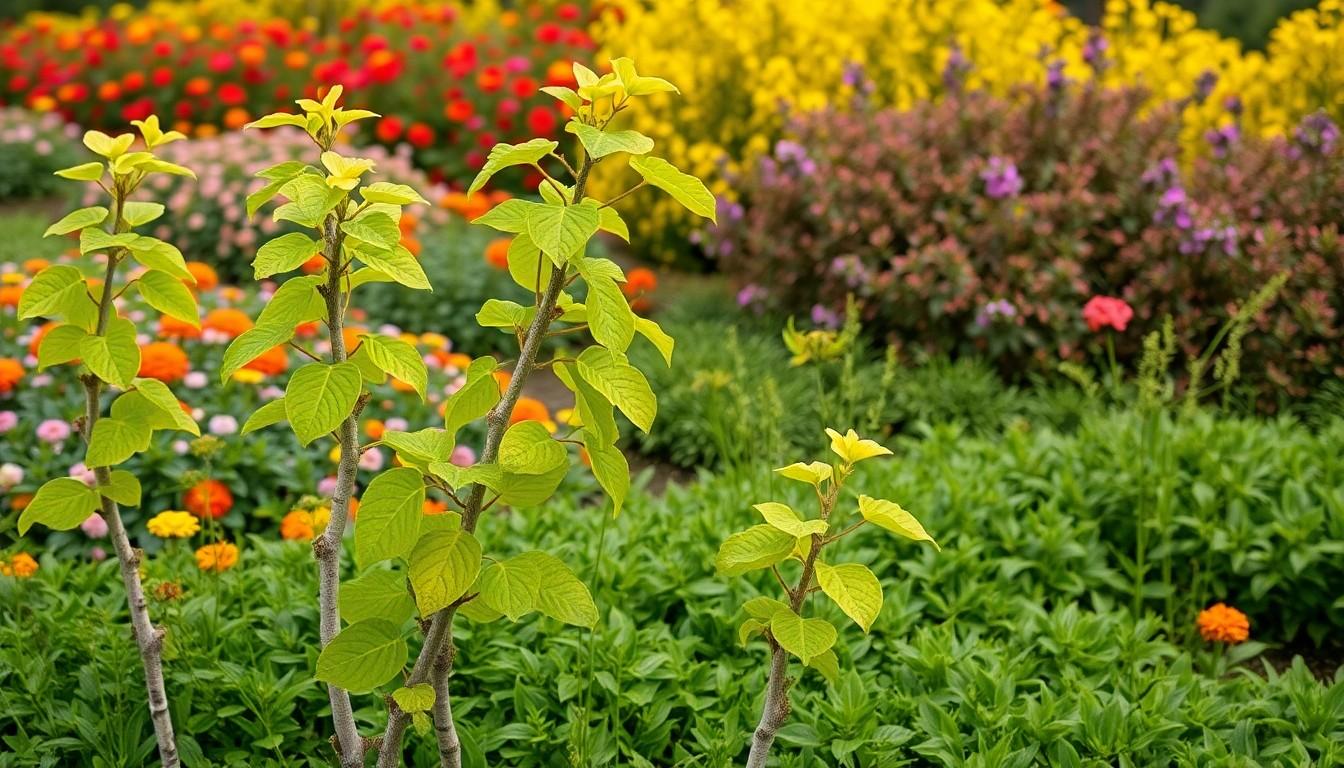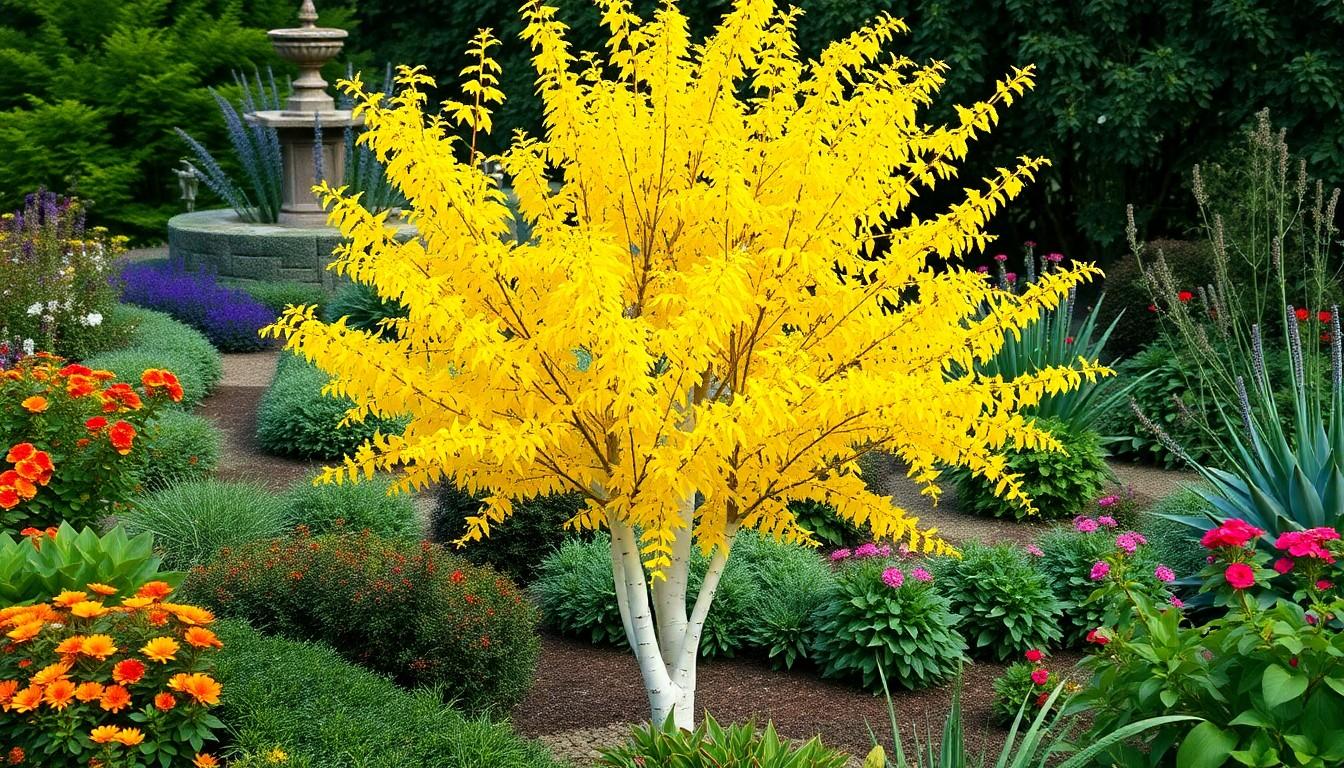Physical Address
304 North Cardinal St.
Dorchester Center, MA 02124

Dwarf birch trees are the unsung heroes of the landscaping world. With their charming stature and stunning foliage, they’re like the cool kids at a garden party—everyone wants to hang out with them. Imagine a tree that doesn’t just take up space but creates a delightful focal point in your yard. These little wonders are perfect for those who want a touch of elegance without the towering commitment.
Not only do dwarf birch trees add visual interest, but they also thrive in various conditions, making them a versatile choice for any landscape. Whether you’re looking to create a cozy nook or a vibrant border, these trees deliver. Plus, who wouldn’t want to impress their neighbors with a tree that sounds like it belongs in a fairy tale? Dive into the world of dwarf birch trees and discover how they can transform your outdoor space into a whimsical retreat.
Dwarf birch trees (Betula nana) provide unique charm and versatility in landscape design. Known for their compact size, these trees typically reach heights of 1 to 3 feet. They adapt well to various soil types and climates, thriving in USDA hardiness zones 2 through 6.
Multiple varieties exist, including the Arctic dwarf birch and the western dwarf birch. Each offers distinctive features, such as unique leaf shapes and bark colors. Their foliage typically turns a bright yellow in the fall, enhancing seasonal interest.
Dwarf birch trees require minimal maintenance. Regular watering ensures healthy growth, especially in the initial planting phase. Pests and diseases rarely affect them, making them a resilient option for landscapes.
Landscapers appreciate their visual appeal in various settings. Grouping several dwarf birch trees creates a striking effect. Individual specimens make excellent focal points in gardens, adding elegance and character. In addition, they serve well in cottage gardens, rock gardens, and as part of naturalistic landscaping.
Choosing dwarf birch trees contributes to a diverse ecosystem. They attract pollinators like bees and butterflies, boosting garden biodiversity. Consider planting near native plants to create harmonious garden environments.
Dwarf birch trees also tolerate cold temperatures and poor soil conditions. They thrive in areas with heavy winds, making them ideal for coastal or exposed sites. Homeowners seeking to enhance their landscapes should consider incorporating these trees for their beauty and resilience.

Dwarf birch trees offer numerous advantages that enhance outdoor spaces considerably. Their compact size and unique characteristics make them exceptional contenders for various landscaping needs.
Visual interest characterizes the dwarf birch tree. These trees showcase attractive leaf shapes and striking bark colors, providing a charming visual element to gardens. Bright yellow foliage in the fall adds seasonal color and dynamism. Beauty is evident whether these trees stand alone as focal points or group together to create a cohesive landscape design. Landscapers often favor them for rock gardens, cottage gardens, and naturalistic settings, effectively elevating the overall charm of landscapes.
Dwarf birch trees foster a healthy ecosystem. Pollinators such as bees and butterflies are attracted to their blooms. These trees enhance biodiversity through their ability to thrive in cold temperatures and poor soil conditions. Resilience against pests and diseases promotes a sustainable garden environment. They serve as effective windbreaks, protecting more delicate plants nearby. Flexibility is vital; these trees adapt well to various landscaping situations, making them valuable additions to diverse outdoor spaces.
Dwarf birch trees offer various types suitable for landscaping, each contributing unique characteristics to outdoor spaces.
Betula nana, commonly known as the dwarf birch, typically reaches heights of 1 to 3 feet. This deciduous tree features small, rounded leaves that turn vibrant yellow in the fall. Adaptable to varying soil types, it thrives in USDA hardiness zones 2 through 6. Some gardeners appreciate its tolerance for poor soil and cold conditions, making it ideal for rocky or challenging landscapes. Pollinators like bees and butterflies often find refuge among its branches, supporting local ecosystems. Its compact form allows it to serve as an excellent choice for small gardens or as part of a border.
Betula purpurea, known as the purple-leaf birch, adds striking visual interest with its deep reddish-purple foliage. This type can reach a similar height range as other dwarf varieties, typically from 1 to 3 feet. They adapt well to different soil conditions and prove resilient against many pests and diseases. Homeowners appreciate the stunning contrast Betula purpurea provides against lighter-colored plants. During autumn, its leaf colors transition beautifully, making it a stunning addition to fall landscapes. This variety also attracts pollinators, enhancing biodiversity in outdoor spaces and providing a lush environment.
Dwarf birch trees enhance landscaping with proper planting and care techniques. Focus on soil quality and watering practices for optimal growth.
Dwarf birch trees prefer well-drained, acidic to neutral soil with a pH between 5.5 and 7.0. Incorporating organic matter like compost significantly improves soil structure and nutrients. These trees thrive in sandy or loamy soil types, allowing for adequate drainage. Avoid heavy clay soils that retain excess moisture, which may lead to root rot. Consider planting in raised beds if drainage is a concern. Testing soil before planting helps determine specific amendments needed to create ideal conditions.
Young dwarf birch trees benefit from regular watering during their first growing seasons. Consistent moisture supports root establishment, especially in dry spells. Water deeply and infrequently rather than applying light, frequent watering. Once established, these trees require minimal water, adapting easily to various moisture levels. Applying a balanced fertilizer in early spring can boost growth but keep the dosage moderate to prevent over-fertilization. Routine mulch application retains soil moisture and suppresses weeds around the base, supporting overall health.
Dwarf birch trees offer a unique blend of beauty and functionality for any landscape. Their compact size and striking foliage make them perfect for small gardens or as accents in larger spaces. With minimal maintenance and adaptability to various conditions, they’re an ideal choice for homeowners looking to enhance their outdoor areas.
These trees not only provide visual interest but also support local ecosystems by attracting beneficial pollinators. By incorporating dwarf birch trees into landscaping designs, individuals can create inviting and vibrant environments that thrive through the seasons. Their charm and resilience make them a standout option for anyone wanting to elevate their garden’s appeal.